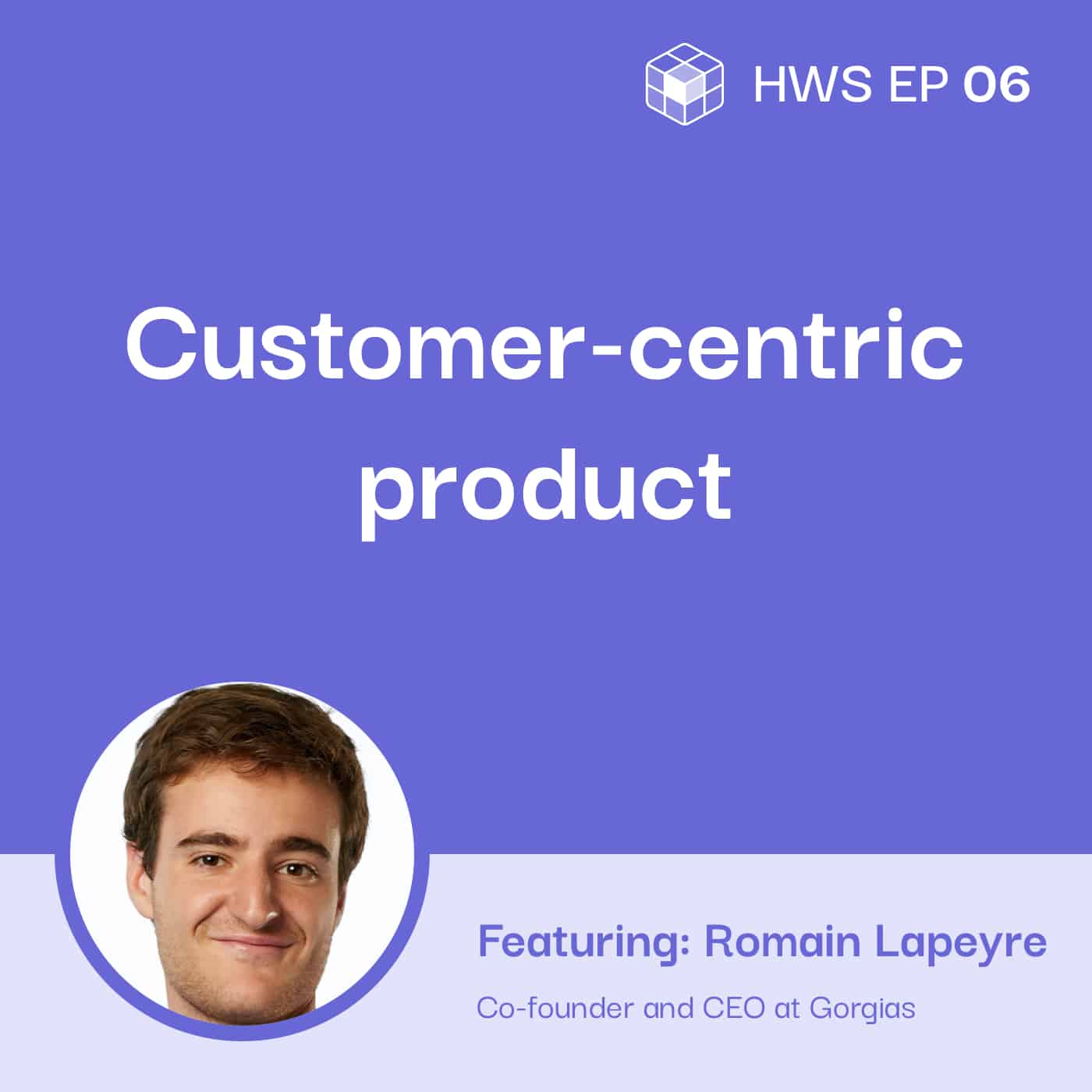Listen on:
Table of Contents:
Gorgias Co-founder and CEO, Romain Lapeyre, is focused on building 1 solution — the exact solution his customers want. He came on the How We Solve podcast to explain his 3-step process to creating the exact solution to the exact problem your customers have.
Gorgias + Romain’s backstory:
Romain is a self-described productivity nerd — whenever he finds himself doing something multiple times, he begins looking for a shortcut, which is why he co-founded Gorgias.
Gorgias started about 4 years ago with the basic premise of saving time for people who write many emails. Originally, Gorgias helped build templates so people could respond faster when they were writing multiples of the same responses, like calendar links or a repeated answer to a repeated question.
Romain and his cofounder, Alex, realized that most of the users were customer support agents.
Thus was born Gorgias 2.0.
Gorgias is now a customer support help desk specially designed for e-commerce stores. It integrates with major applications, such as Shopify and Slack. They work with over 2,000 brands, like Steve Madden and Rothy’s, to name a couple.
There is always a part that is quantifiable, that is, listen to your customers.
The challenge: Building the exact solution your customers are seeking
When Gorgias was first starting to build their help desk, they needed input from the market on what features their product should have. At first, Romain’s team used a 1-to-1 approach to feedback: They were able to ask potential customers what features they wanted. Then, they programmed those exact features into the product.
But, as Gorgias grew, the problem morphed into:
How do we listen to our customers at scale?
Romain found a way. Even when you have over 2,000 customers, Romain’s 3-step approach helps you incorporate your customers’ product requests into your product.
The success of a company is based on how you listen to customers to fulfill their needs.
Step 1: Collect & measure data
The success of your company is based on how well you listen to customers to fulfill their needs.
The first stop is data collection. You’ll want to list out the touch-points you have, to determine all the potential sources of inputs.
For Gorgias, they use these inputs to collect data:
- NPS — (Net promoter scores)
- Support tickets — Every time a client asks for a feature their product doesn’t have, a form gets filled out
- Collect sales questions — The sales team is constantly asked, “Does your product do x?” Again, this is documented
Step 2: Classify feedback
After you’ve collected data, you need a way to classify it into something meaningful. The best way is to map each piece of product feedback to a specific feature request.
Romain’s team has collected about 5,000 data points so far, which are mapped to a total of 400 feature requests.
Step 3: Build accordingly
Once you’ve mapped your feedback data to certain product categories, you can then easily see what the top feature requests are for your product. Now, it’s easy. Build accordingly.
And, when you do ship, ensure you let those customers know who requested those specific features: “You asked for feature x. We heard you, and here it is!”
Pro tip:
Ensure you don’t send too many “updated features” notifications to your customers — you don’t have to tell everyone each time you add a new feature. Just ensure you notify any customers who had specifically requested that update.
Romains 60-40 approach:
There’s always a challenge of building what customers ask for versus building what you think they will need in the future, but they aren’t asking for yet.
At Gorgias, they use a 60-40 approach: 60% of their resources are geared toward what is being requested now, and about 40% of their resources are geared toward building what they predict customers will want.
How do you know what measurements to use?
To ensure you are collecting the right metrics, Romain says to gather your team and determine: “What are the elements we care most about?”
Stay away from vanity metrics.
Be careful with vanity metrics; for example, don’t measure things like, “How many times has this feature been used?” because that metic will always be going up. Instead, measure how many times a feature has been used within a given period.
Here’s a good way to ensure you stay away from vanity metrics (or other unnecessary metrics):
Establish a few North Stars
For Gorgias, the most important element is: “How fast do our clients respond to their customers, and has the satisfaction of their customers gone up?”
From that launching point, Romain and his team have created 3-4 North Star metrics. They ensure every other metic is judged against those North stars; if a metric doesn’t illustrate how one of those North Stars are going up or down, they throw out the metric.
I asked Romain if he had a personal mission statement. He joked that, as a European, he didn’t like to make bold statements about his life, but if he had to, he’d say, “automate work with data.”
A few resources Romain says to check out:
- The Lean Startup — a must-read book for any startup
- Personal MBA — Romain said this book is worth his entire MBA
- Higher Output Management — by Andrew S. Grove, former Intel CEO
This interview is part of the How We Solve podcast. To hear more from industry experts who are solving everyday business problems, check us out on Spotify, Apple Podcasts, and on our website.
This episode is featuring

Romain Lapeyre
Romain is the co-founder and CEO of Gorgias, the customer service platform that helps e-commerce websites sell more.
Romain started Gorgias with his co-founder Alex in Paris in 2015 right after college in Paris. Their initial product was a Chrome Extension to insert templates in emails. Soon, they realized that support people where the most active users, and they started working on improving the life of support agents.
You can contact Romain via email: Romain@gorgias.io
Listen on:
